
Passivhaus
Welcome to Passivhaus: The Energy Efficiency Podcast, episode 2, the podcast that brings you a mix of energy efficiency news, products and tips all year round. We’re interested in profiling people and products involved in promoting energy efficiency habits, products and information, so please do get in touch if you have something to contribute.
Passivhaus
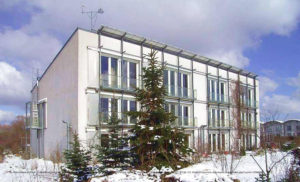
If you’re interested in energy efficiency chances are you’ve heard of passivhaus. In very simple terms passivhaus is an airtightness standard achieved through high-performance windows, doors and other danger zones together with very high levels of insulation and efficient heating systems. The certification can be applied to whole buildings, specific components such as windows, and the architects and tradespeople involved in the design and build. Rigorous testing is carried out before anything or anyone involved can be designated to have met the required standard.
As a guide, a passivhaus building will have excellent insulation, low-energy services and require very low levels of energy to keep at a comfortable temperature. In the UK building regulations typically require a level of insulation and energy efficiency far lower than passivhaus, and within that standards vary across England, Scotland and Wales, and differ between domestic and non-domestic buildings.
Exeter
However some organisations in the UK are building to passivhaus standards. They clearly recognise the benefits of keeping buildings at a comfortable draught-free temperature at a low energy cost. Exeter City Council is one. For the last 10 years all new council buildings in Exter, both residential and commercial, are very low energy (meeting passivhaus standard), healthy (meeting the German Building Biology principles), climate ready and set within a sustainable landscape. The Association for Public Service Excellence has this to say:
“These buildings are healthy for residents and occupants, comfortable regardless of the weather and extremely cost effective to run (thereby helping to eradicate fuel poverty). From a Council perspective we have reduced operating and lifecycle building costs, happier and healthier tenants with reduced rent arrears and anti-social behaviour and exemplar buildings that are performing way beyond comparable building regulation compliant assets.”
But what do you have to do to create buildings operating to such high energy efficiency standards? It comes down to reducing heat loss, maximising the effect of passive sources of heating such as sun, body warmth and extracted or emitted heat from household appliances, and making up any shortfall with low energy heating systems. The Passivhaus Institute describes it as
“A Passivhaus is a building in which thermal comfort can be achieved solely by post-heating or post-cooling the fresh air flow required for a good indoor air quality, without the need for additional recirculation of air.”
High standards
This can be a very complex process requiring expensive high-performance elements such as triple-glazed windows and a mechanical ventilation system with efficient heat recovery; extremely detailed planning; and specialist builders and fitters.
It’s not feasible in many cases of renovating an existing property, in which case EnerPHit can be a more appropriate standard to aspire to. This is a slightly less exacting standard designed for renovations, particularly where the architecture of the building needs to be conserved. Improving the energy efficiency of historic buildings without causing more problems than you solve is something we will look at in a future episode.
EnerPHit
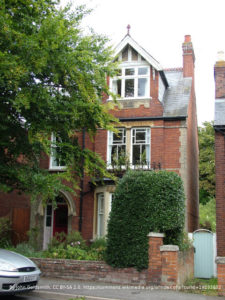
The UK has one of the highest proportions of pre-WWII domestic buildings in Europe. Unsurprisingly old and inefficient buildings have been identified as one of the biggest contributors to energy wastage in the EU.
The EU has identified energy efficiency as one of the pillars of its policy response to addressing the challenges of climate change and the reduction of greenhouse gas emissions. There is an EU-funded PDF brochure available titled EuroPHit: Increasing the European Potential, Implementing deep energy step-by-step retrofits. The link will be in the show notes. It discusses passivhaus and the scientifically-quantified benefits of the passivhaus standard.
EnerPHit benefits from the passivhaus expertise that is available in the UK and beyond. While accepting that it’s not possible to reach such high standards, working with passivhaus principles in an EnerPHit project will dramatically improve the energy performance of an older house. The Passivhaus Trust website includes a number of case studies of both social and private housing, commercial buildings and educational settings, which have undergone renovations aimed at achieving EnerPHit standards.
EnerPHit focusses on improving the energy performance of the fabric of a building while accepting that many aspects of a building are fixed: location, orientation and often a thermal bridge or two that just can’t be eradicated. According to the magazine Homebuilding & Renovating:
“To achieve EnerPHit you must achieve:
A space heating and cooling demand of 25kWh/m2/year (compared to the Passivhaus standard of 15kWh/m2/year)
Instead of an airtightness performance of 0.6 air changes per hour you need to achieve 1.0 (the Building Regs for new homes require between 5 and 15 according to the Chartered Institution of Building Services Engineers)”
Deep works
To achieve these sorts of figures, though not as rigorous as passivhaus standards, can still be a huge undertaking. It can involve digging out floors and replacing roofs, all within the confines of an existing build. In this situation even more perhaps than for a new build, an expert and very well-informed design team is crucial. The Homebuilding & Renovating article is very informative, so if you’re considering deep energy efficiency work on an existing build it’s very worth while reading.
Open Days
Every year the UK Passivhaus organisation puts on the UK Passivhaus Open Days, as part of the International Passivhaus Open Days. This year it’s running the weekend of 28th-30th June, and details can be found at http://www.passivhaustrust.org.uk/event_detail.php?eId=650
Community Projects
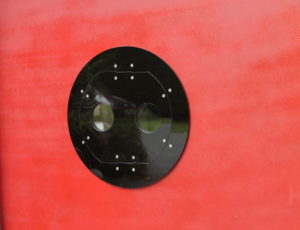
Most people won’t undertake a large scale project to build or retrofit a house to passivhaus or EnerPHit standards. Many people will make some changes, install items such as a Chimney Sheep or a Petflap draughtproof pet door, hang a curtain over the front door or maybe replace a boiler.
Funding
Many households have neither the budget nor the scope to make any improvements. It’s in this situation that community groups can provide an invaluable service. They offer advice, subsidised services and products, and in some cases obtain grants. Plymouth Energy Community – PEC – is one of these organisations. In 2016 it received £500,000 from the Big Lottery Fund for a four-year project to help disabled people stay warm, well and comfortable in their homes.
The problems most commonly encountered were issues with the building fabric – poor insulation and black mould for example – but also problems paying bills and a lack of understanding of how to get the best deal from an energy supplier. PEC visits people in their homes. It advises on the best energy deal and how to use energy efficiently, and looks at how the household could benefit from grants and schemes such as the Warm Home Discount Scheme.
The Warm Home Discount Scheme
The Warm Home Discount Scheme is a government initiative open to people in receipt of specific pension top-ups, and those on a low income who qualify for their supplier’s criteria for the scheme. There’s potential for up to £140 off an electricity bill that comes in the form of a discount off the bill rather than as a payment.
These and other grants and schemes can be complex to apply for, so the assistance of groups such as PEC is very welcome and makes a real difference to those it reaches. The Royal Borough of Kensington and Chelsea runs a similar scheme under the title Homes4Health, focussing on the poor health outcomes of living in a damp home, such as respiratory and circulatory problems. This free service is delivered by the environmental charity Groundwork London, and aims to reach young families, elderly residents and those with multiple health conditions. The range of services offered by Groundwork London through this scheme is impressive and wide-ranging. It includes practical help such as installing small draughtproofing measures.
There are similar schemes run all over the UK so if you or someone you know could benefit search up something like “warm homes energy efficiency” with your location and see what comes up.
Thermal imaging
The magnificently-named C>H>E>E>S>E project in Bristol is doing something different from many community projects. It conducts thermal imaging of a home from low-cost to no-cost depending on a household’s circumstances. A clear understanding of a building’s thermal performance is essential if works to the home are going to focus in the right and most cost-effective places. CHEESE’s work typically shows up poorly-fitting windows, missing insulation and draughts between floorboards. These can all make a home feel uncomfortable in cool or damp weather.
Generating power
Not all community energy efficiency projects focus on home improvement and help to pay bills. Some schemes actually generate the energy. There’s a list of projects on the Community Energy England website. Back to Plymouth, a solar array has been built on derilict land, providing enough clean energy for 1000 homes. This is an excellent use of derilict or brownfield sites. The project is forecast to provide a community benefit fund of approximately £2,900,000 to support PEC’s grassroots work.
In Talybont on Usk a group is generating hydroelectricity for the community. This first community hydro scheme in Wales runs a 36kW hydro electric turbine off the compensation flow from Talybont Reservoir. Since launching in 2006 the group has diversified into a community eco car share scheme that runs one electric van, and a car running on recycled vegetable oil. The group has also installed PV panels on the community hall roof which helps cover the hall’s running costs and powers the community electric car. The group continues to develop and looks to be a great example of what can be achieved.
A project straddling the two community energy efficiency models is Energise Barnsley, which has installed free solar PV panels on the roofs of over 300 council-owned homes. The majority of these homes are bungalows with elderly residents. A proportion of them are on pre-payment meters. The residents benefit from savings through the use of a solar electricity monitor which indicates when the solar panels are generating and so when they can use free electricity. So far residents have saved over £40,000 and reduced carbon emissions by 400 tonnes. Schools, sheltered housing and community buildings in Barnsley have also had the panels installed. This makes the combined size of the portfolio the largest UK community energy project by the number of roofs installed on.
Complex
Reading up on the projects listed, it’s clear that starting up a wind, solar or hydro project is a slow and complex process requiring various funding streams, feasibility studies and often planning permission. Many projects listed are great ideas but are only part- way through this process.
The UK Energy Research Centre – UKERC – website says that although exact numbers aren’t available, it’s estimated there are about 300 small energy generation schemes in the UK. The sector was going at a great pace until recent political changes reduced support for schemes of this sort through changes to the feed in tariffs. This has slowed down development.
However a press release on the UK Power Networks website states that community energy is powering thousands of homes in the South East, East of England and London, according to a newly published report into local generation with Community Energy England and Community Energy South. The majority of community electricity generation in the region comes from two solar farms owned by Orchard Community Energy in Kent and Meadow Blue Energy in West Sussex. They generate 10.4 MW between them. This is very encouraging and we hope to see more good news of this nature.
Smart Meters
Smart meters have for a few years now been hailed as the solution to energy wastage. We must all have seen a friend very excited by the new monitor and turning off appliances they had previously hardly considered. This tends to be a flurry of enthusiasm in the early days, then normal service is resumed. The reality is that smart meters themselves do nothing to reduce a building’s energy usage. They can draw attention to the most energy-hungry items and allow the householder to make a judgment to discard, turn off or upgrade an item but ultimately this human effort is what makes the difference. Smart meters can lull the homeowner into a false sense of security of having ‘done something’, when actually nothing will change without their input.
Changing habits
Depending on what you read, smart meters are a fad, are here to stay, will save half a billion a year or reduce your annual bill by about a tenner. Clearly smart meters divide opinion. According to a Which report on smart meters:
“34% of smart meter owners think their gas and electricity use has reduced since they had a smart meter installed. In contrast, 20% of smart meter owners think theirs has increased.”
The rest don’t think anything’s changed. It seems installing a smart meter is most likely to lead to savings if the homeowner has requested one, ie the individual was already aware of energy efficiency and wanted a tool to help them best achieve it, so the willingness to work with the meter was there in the first place.
Widespread installation
The government would like all homes to have a smart meter installed by 2020. There’s no obligation and anyone has the right to refuse. Seeing smart meters in all homes is part of the process of developing a ‘smart grid’. This smart grid would allow for more efficient matching of supply and demand. Balancing this is a headache for the industry at the moment.
Installing smart meters widely should remove the need for estimated bills and getting into a cobwebby dark and awkward corner with a torch to read the meter. Some energy suppliers offer so-called agile tariffs which display energy prices via the smart meter on an eg half-hourly basis. A householder can then use energy when it’s cheapest. On the other hand, the cost of installing a smart meter in every home adds something to the bill.
Problems
Some earlier meters have lost functionality when the householder has switched supplier but this can be fixed by a wireless update. Failing that the energy supplier is required to fit a new meter.
According to the Octopus Energy website:
“As of March 15 2019, SMETS1 meters are no longer Ofgem compliant.”
They go on to explain that there’s only limited SMETS2 stock available in the UK currently. Reading around energy suppliers’ websites, it’s clear that they have reservations and are holding back on full scale installation to monitor smart meter performance and problems.
These problems seem not to be going away any time soon. According to The Independent:
“Energy giant SSE agreed to donate £700,000 to the official fund for supporting vulnerable bill payers this week after failing to meet obligatory smart gas meter installation targets. It’s the latest in a series of hits, delays and, ironically, spiralling bills to have plagued the much-vaunted smart meter rollout, designed to deliver cost-saving technology to 30 million homes and small businesses by 2020.”
The article goes on to quote Smart Energy GB, the agency promoting smart meters. It said that of 2000 people polled more than a third said they would be more likely to buy an electric vehicle (EV) if they could use their smart meter to programme charging for the cheapest periods. EV use could play a key role in promoting enthusiasm for smart meters in the home.
So far the greatest benefit of smart meter roll out is as much for the benefit of the energy suppliers and the national grid as it is for the customer. The ball is in the companies’ court to help householders understand how to get the best from their meters.
Energy saving product of the week
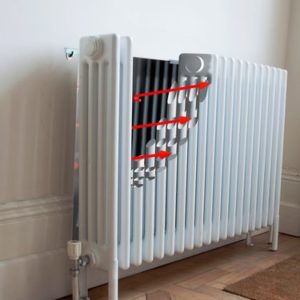 This week’s energy saving product is another simple but effective idea. Radflek Radiator Reflectors are laminated aluminium foil panels that sit against the walls behind your radiators. They reflect back into the room heat that would otherwise be wasted against an external wall. Tests showed that Radflek reduced heat transfer through walls by 45%
This week’s energy saving product is another simple but effective idea. Radflek Radiator Reflectors are laminated aluminium foil panels that sit against the walls behind your radiators. They reflect back into the room heat that would otherwise be wasted against an external wall. Tests showed that Radflek reduced heat transfer through walls by 45%
Radflek’s website claims that it reflects 95% of wasted heat back into your room, really exceptional performance. We like the idea of these reflectors because they prevent waste, one of our top aims, but like our products they are fit-and-forget solutions. The panel stays in place all year round and whenever your heating comes on it will start doing its job immediately.
At an affordable price of around £20 for six panels, Radflek expects to pay for itself in a year or so. The panels go on for years so you make savings every year. Added to that, Radflek’s site describes the product as visually unobtrusive, easy to fit and requiring no DIY skills. For the final seal of approval, The Energy Saving Trust recommends Radflek Radiator Reflectors.
Richard’s Energy Saving tip of the week
If you want to fit insulation to parts of your house but have only a small budget, not enough to fit out a whole room or house, you will get the maximum effect for your money by insulating the walls from the ceiling down. This prevents the warm air that rises in a room from chilling down as much as it would in a room without insulation at the higher levels. Together with the thermostat ledge tip in last week’s episode, this will help you keep warmer for less outlay and get the best from your thermostat.
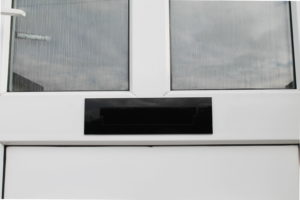
What are we up to? We’re still in flux while we work with new kit, and we’re expecting samples to arrive soon from a new manufacturing partner. While keeping a close eye on quality and always looking at ways to make our manufacturing as quick and simple as possible, we are looking to work with partners as much as we can. This is how we will increase manufacturing volume and bring the Letterplate Eco to market as soon as we can.
Thank you for listening. Search for Ecoflap on Twitter and Instagram to keep up with us until next time. Next week we’ll be talking about energy efficiency in historic buildings, energy efficiency across the world and sustainability in the construction industry. We are lining up a couple of interviews for future episodes, and as always we’re keen to hear about energy efficiency initiatives, projects and products, so please do get in touch if you have something to contribute. Until next time.
“Werq” Kevin MacLeod (incompetech.com)
Licensed under Creative Commons: By Attribution 3.0 License
http://creativecommons.org/licenses/by/3.0/
